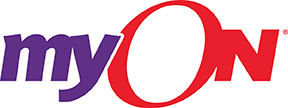Debate over the pros and cons of implementing e-books into schools continues to be robust in publishing and educational circles. But most observers agree that e-books are here to stay—at least for the foreseeable future, which is the best anyone can predict in an era of technological advances. As a new academic year kicks off and more students than ever have access to e-books, we take a look at where the educational e-book market stands today and how those titles are being purchased and used by schools.
The precise size of the educational e-book market is difficult to quantify because of the various ways e-books are packaged for sale to schools. According to the Association of American Publishers elhi report for 2014, publisher revenue for the pre-K–12 categories that contain e-books (bundles, standalone software, and platforms) breaks down into the following: bundles account for $1.2 billion, and standalone software and platforms account for $382 million, for a combined total of roughly $1.6 billion.
Not surprisingly, the significant revenue from, and growth potential of, the educational use of e-books means that more companies monitor the scope and the trends of this market segment, as the publishers, distributors, and consumers of these products work to find the best ways to work together. A January 2015 survey of 475 educators nationwide, conducted by LightSail Education (a tablet-based literacy platform that partners with Baker & Taylor), revealed that 94% of respondents expect that the share of books read as e-books in their schools/districts over the next two years will increase, and 52% of school/district leaders said they want their students to be reading digital books.
Putting such expectations more concretely, 66% of schools across the country currently offer e-books, according to the 2014 School Library Journal “Survey of E-book Usage in Schools.” That’s a 10% increase over the previous year’s results from the same survey. Participants noted that demand for e-books and circulation of e-books in school libraries rose a bit in 2014–2015.
The portion of children who have read at least one e-book has increased steadily over the past five years, according to Scholastic’s 2015 “Kids and Family Reading Report.” In 2010, 35% of kids had read at least one e-book, and in 2014 that number was up to 61%. Most kids who read e-books do so at home, but the percentage of children who read e-books at school has jumped from 12% in 2012 to 21% in 2014...
...E-book and digital sales are on the upswing at Capstone. “Approximately 40% of our business is digital, and that’s rapidly growing,” says chief content officer Ashley Andersen Zantop. “There’s no question that demand [for e-books] is increasing,” she adds. Capstone e-books are available through the publisher’s own platform, via its MyON literacy program, which also includes titles from other publishers, and through other e-book distributors...
To read the entire article from Publishers Weekly click here.

